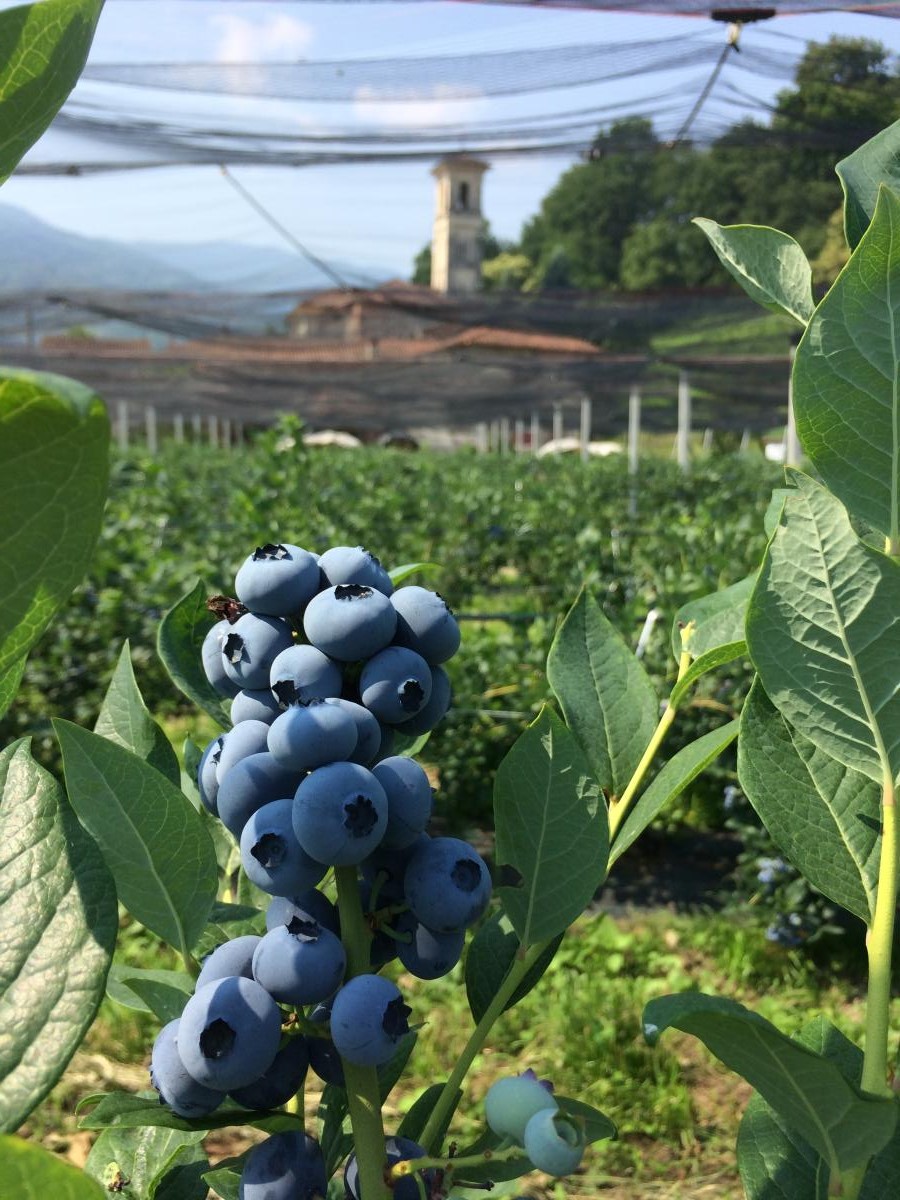The 2021/22 season was not an easy one for growers and exporters of blueberries in the southern hemisphere. This time, however, it was not due to the weather, but to complications mainly due to logistics. There were delays all along the chain. There was a shortage of pickers, ships were loaded more slowly, there were no containers, transit times increased and unloading at the ports of arrival was delayed. Shipments that used to take two or three weeks in other years now take three or four weeks.
This had an impact on the quality and condition of the fruit. The chains rejected the fruit and sent it to wholesale markets, where it was offered at very low prices. In addition, he says, the supply increased significantly year on year due to the expansion of production.
Competition between suppliers is increasing. Due to increasing global demand, larger and larger quantities are being placed on the market, which also has an effect on prices, which are no longer as attractive as in previous years. They are at a much lower level and therefore threaten profitability.
- Peru: new varieties and greater efficiency in demand
- Chile: Focus on quality
- Argentina: supplying niche markets
- Uruguay: Failure to expand land area
PERU: NEW VARIETIES AND GREATER EFFICIENCY IN DEMAND
Peru continues to make progress and maintain its position as a leading exporter. The strong increase in production and exports is the result of the explosive expansion of the cultivated area in recent years. In five years, it has grown from 4,000 hectares to 16,500 hectares. From the central region of La Libertad, cultivation expanded to Lambayeque, Lima, Piura, Ica and Ancash. At the same time, there was a strong change in the variety issue. From Biloxi, with which Peru had its first success, it expanded to Ventura, Emerald, Mágica, Snowchaser and others.
The upcoming season will see further expansion and a new export record of over 200,000 tonnes. This is almost 30% more than the previous season and a doubling of volume in three years. Progress has been made in all destinations. The USA remains the most important market with a 56% share. Europe follows in second place with a third of the shipments, and Asia - especially China - has become the third most important destination, growing the most in recent years.
However, the strong expansion is likely to slow down somewhat due to soil and climate problems in the new growing regions. At the same time, blueberries is no longer as profitable as it was a few years ago, costs have risen and market prices have fallen. This makes it necessary to refine the figures and seek greater efficiency in the whole process.
CHILE: FOCUS ON QUALITY
For 20 years, Chile was the main producer and exporter in the southern hemisphere. But with the emergence of new players such as Peru, Mexico and Morocco, the situation has become more complicated. This is because the 'new' countries have the advantage of large growing areas, generally lower costs and the ability to grow the fruit in arid areas without rainfall or extreme temperatures. Chile, on the other hand, has to deal with frosts, heat peaks, rainfall during harvest and water shortages. All this makes harvesting difficult and makes it impossible to accurately plan export quantities.
However, the country has extensive experience, a good and diversified structure of producing and exporting companies, long-standing trade relations with importers in northern markets, commercial advantages through numerous agreements and contracts signed, and strong government support for the sector. To cope with the increasing complexity of the blueberries trade, the Chilean sector has decided to focus on exporting quality fruit, increasing selection standards, choosing varieties with the best shelf life and promoting improvements throughout the chain.

The production and export of organic blueberries is already fully developed and frozen food is also becoming increasingly important. Strict selection of varieties and quality has also been made in the current season. So far, shipments are 10% below those of 2020/21, so the season should end with exports of 105,000 to 110,000 tonnes. The main market is the US, but with volumes down from 70% to 52%.
Europe is the main beneficiary of this development. Shipments are increasing year on year and now account for 35% of the total. In the Far East, expectations were high but progress was complicated and not as expected. In the 2021/22 season, the share will be 11%. In the Far East, China, South Korea, Japan and Singapore are important customers.
ARGENTINA: SUPPLYING NICHE MARKETS
The reduction in cultivated area and the decline in exports would reflect a lack of understanding and inequality in Argentina. There would be many factors that make Argentine fruit less competitive: high domestic costs, tax pressure, complex labour regulations, bureaucracy, lack of government support, lack of contracts with purchasing countries, high tariffs, logistical problems, etc.
The 2021/22 season ended with exports of 8,500 tonnes, 20% less than the previous season. Faced with increasing competition from other countries, sharply rising costs (logistics, inputs, energy) and increasingly complex markets, the industry is increasingly focusing on supplying niche markets - especially organic. About half of all exports are likely to come from organic farming.
In contrast to its competitors, Argentina's sales markets are more diversified. In the past, the largest volume was supplied to the United States, but exports have declined and now account for less than half. In contrast, Europe's share is growing. In recent years, deliveries have fluctuated between 3,500 and 4,000 tonnes. Argentina exports to China, but only in small quantities due to high customs duties.
URUGUAY: FAILURE TO EXPAND LAND AREA
Uruguay's blueberries industryis alsofacing serious difficulties. About 20 years ago, at the height of the blueberry boom in the southern regions of South America, cultivation was extended to regions that were not suitable for production from an agro-ecological point of view. Given the poor results, these areas were soon abandoned and production is now concentrated in the Salto region.
But even in this area, blueberries are often affected by hail, drought, excessive rain or frost. In addition, high domestic costs make cultivation uncompetitive. The sum of these factors has led to a sharp decline in area, production and exports. In the 2021 season, exports amounted to 570 tonnes, much less than in previous years, when they reached 1,000 tonnes. Of the exports, two thirds went to the United States and the rest to Europe.
Betina Ernst
Source:Fruitnet
Fruitnet is part of the NCX Media network.














